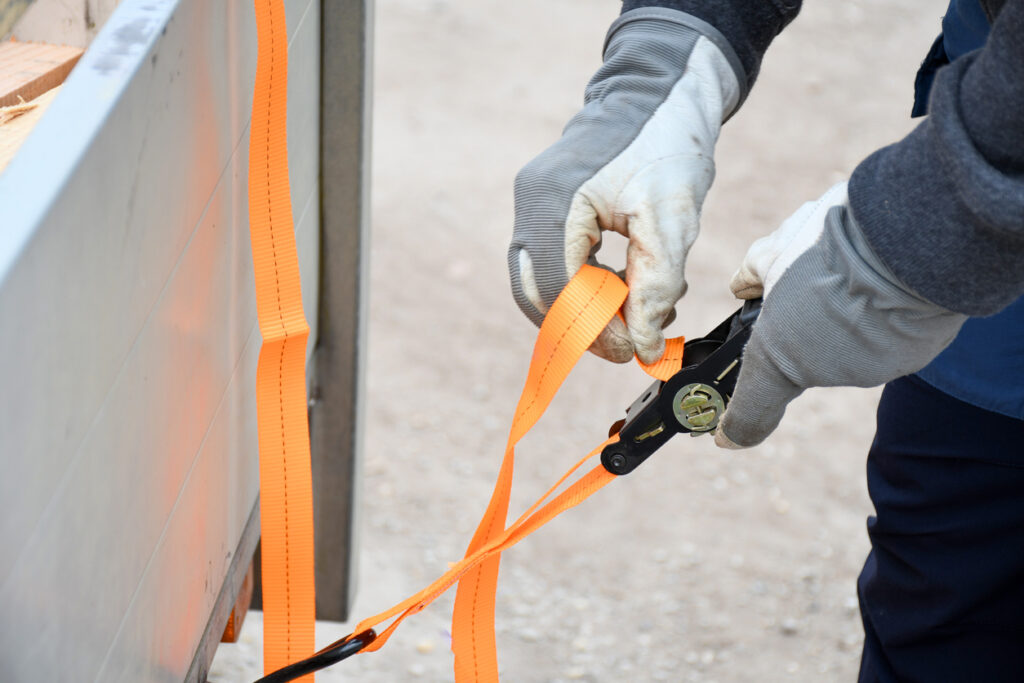
How to Use a Tie-Down Strap: A Step-by-Step Guide for Beginners
Securing cargo properly is essential whether you’re moving household items or transporting equipment. One of the most reliable tools for this task is the tie-down strap. Designed to fasten and stabilize loads during transport, tie-down straps are simple to use once you understand the mechanics. If you’re new to securing cargo, don’t worry—this guide will walk you through how to use a tie-down strap, step by step.
At PaK-All, we aim to make moving and transporting goods as safe and easy as possible. Here’s everything you need to know about how to use a tie-down strap efficiently.
What is a Tie-Down Strap?
Before we dive into the steps, let’s quickly cover what a tie-down strap is and why it’s so effective. A tie-down strap is a flexible piece of webbing with a tightening mechanism, usually a ratchet or cam buckle, designed to secure and stabilize cargo during transit. The main components include:
- The Strap: A strong, durable webbing (typically polyester or nylon) that wraps around or over your cargo.
- Hooks or Fasteners: Attach the strap to your vehicle or anchor points. Common types include S-hooks or flat hooks.
- Tightening Mechanism: A ratchet or cam buckle adjusts the tension of the strap to secure the load.
Now, let’s walk through how to use a tie-down strap step by step.
Step 1: Gather Your Equipment
Start by gathering the right equipment:
- One or more tie-down straps with an appropriate working load limit (WLL) for your cargo.
- Anchoring points on your vehicle or trailer where the hooks can attach (D-rings, loops, or edge rails).
Always check that your tie-down straps are in good condition. If you see any wear or damage, replace them before use.
Step 2: Position the Strap
Begin by positioning the strap over or around the cargo you want to secure. For items like furniture or machinery, place the strap evenly across the load. If bundling items together, wrap the strap around the objects. Make sure to leave the hooks accessible on either side to attach to the anchoring points.
Step 3: Attach the Hooks
Next, attach the hooks to the appropriate anchor points. Hook one end to a secure point on your vehicle or trailer. Ensure the anchor points are sturdy and won’t shift or break during transit. Attach the second hook to another anchor point on the opposite side of the cargo. At this point, the strap should be loosely positioned over the load.
Step 4: Tighten the Strap Using the Ratchet or Cam Buckle
Now, it’s time to tighten the strap. The method will depend on the type of strap you’re using:
For Ratchet Straps:
- Feed the loose end of the strap through the ratchet mechanism and pull out any slack.
- Crank the ratchet handle back and forth to tighten the strap. Each motion will increase the tension.
- Continue ratcheting until the strap is snug around your cargo, but be careful not to overtighten.
For Cam Buckle Straps:
- Feed the loose end of the strap through the cam buckle.
- Pull the strap tight by hand, allowing the cam buckle to lock the strap in place.
Step 5: Secure the Loose End
Once the strap is tightened, you’ll likely have excess strap material hanging loose. Secure this extra length by tucking it under the tightened section or tying it off with a knot. You can also use zip ties or twist ties to keep the loose end in place.
Step 6: Double Check the Tension
Before hitting the road, double-check everything. Make sure:
- The straps are tight and not slipping.
- The cargo is stable and doesn’t shift when pushed.
- The hooks are securely attached to anchor points.
This final check is crucial for safety. If anything feels loose, tighten the strap further or adjust the hooks.
Step 7: Release the Strap After Transit
After transporting your cargo, you’ll need to release the strap safely. Here’s how:
For Ratchet Straps:
- Pull the release lever on the ratchet mechanism to unlock it.
- Open the ratchet completely until it lays flat, releasing the tension.
- Pull the strap free from the ratchet and unhook both ends.
For Cam Buckle Straps:
- Press down on the cam lever to release the strap.
- Pull the strap free and unhook both ends.
Once released, you can safely unload your cargo and store your tie-down strap for future use.
Pro Tips for Using a Tie-Down Strap
- Know the Working Load Limit: Always ensure the strap’s WLL exceeds the weight of your cargo.
- Distribute Weight Evenly: Use multiple straps to balance tension and prevent shifting.
- Avoid Over-tightening: Tighten securely, but don’t overtighten, as this could damage delicate cargo.
- Inspect Straps Regularly: Check your tie-down straps for wear and tear, especially if used frequently.
Next Steps
Learning how to use a tie-down strap is essential for anyone transporting cargo, whether personal or professional. By following these simple steps, you can confidently secure your load and ensure safe transport every time. At PaK-All, we’re committed to helping you get the most out of your moving and transport equipment. Understanding how to use a tie-down strap is the first step.
If you need reliable tie-down straps or have questions about securing cargo, give us a call for more quick tips about tie-down straps. We also have a great article about choosing the right kind of strap for different uses, if you are interested, click here.
